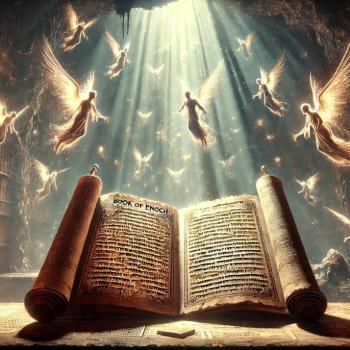The two brothers suspected of bombing the Boston Marathon race eight days ago, on April 15, are 26-year old Tamerlan Tsarnaev and 19-year old Dzhokhar Tsarnaev. They exploded two, homemade bombs that killed three people and injured over 200. Days later, Tamerlan was killed by Boston police in a shootout. Dzhokhar remains hospitalized with gunshot wounds. Authorities are now questioning him, especially regarding a motive for their attack. The older brother is suspected of having become a radical, jihadist Muslim in recent years and that he had much influence to this effect over his younger brother. The two were living in the U.S. as immigrants from the state of Chechnya, where they were born. Their mother is from the larger Dagestan, on the east of Chechnya. She is suspected of influencing Tamerlan to become a radical jihadist Muslim.
Chechnya and Dagestan are located in the Caucasus Mountains. This mountain range exists in a wide isthmus that is sandwiched between the Black Sea to the west and the Caspian Sea to the east, with Turkey and Iran to the south, and Russia to the north. The Caucasus Mountains are geo-politically divided into the Northern (Greater) Caucasus and the Southern (Lesser) Caucasus. The Northern Caucasus extends roughly east-west, and it is regarded as the earth’s main land feature which divides Europe and Asia. Chechnya is a small state located in the eastern portion of the Northern Caucasus. The entire Caucasus Mountains are one of the most ethnically and linguistically diverse regions in the world.
Details are just now coming to light about the Tsarnaev brothers’ Chechen roots. Their parents, now separated, currently live in Dagestan. Their father had immigrated to the U.S. in 2002 as a political refugee, and the remainder of the family followed the next year. Before that, for many years the parents lived in Kyrgyzstan. During WWII, their relatives may have been victims of Stalin’s mass deportation of Chechens to Kyrgyzstan, which is located east of the Caucasus Mountains and the Caspian Sea.
The several states in both the Northern and Southern Caucasus were part of the Soviet Union until its collapse in 1991. The larger states of the Southern Caucasus—Georgia, Armenia, and Azerbaijan—then became independent. But there has remained much territorial dispute between Russia and the other states in the Northern Caucasus.
In 1994, Russia tried to retake Chechnya in what is known as the First Chechen War, which ended in a stalemate. Many Mujahideen—radical Muslim warriors who fought in Afghanistan—then immigrated to Chechnya in what was becoming a very lawless country. In 1999, Russia again attacked Chechnya, called the Second Chechen War. The result was that Chechnya is now governed rather peacefully by a local leader, Ramzan Kadyrov, who is allied with Russia.
An Islamic terrorist insurgency has continued in states near Chechnya, especially Dagestan, and it has been exported to Russia. For example, Chechen Muslims killed 130 people in a Moscow theater in 2002. In 2004, Chechen Muslim terrorists committed two suicide bombings in Moscow, resulting in over 300 deaths of mostly children. Much brutality has been conducted by Chechen Muslims in recent years.
During the mid-1970s, I got interested in the Caucasus Mountains region and the Baltic States because they were territories of the Soviet Union. It happened because of my interest in Bible prophecy. I had been taught that the fourth empire of the endtimes, predicted in Daniel 2 and 7, would be a revived Roman Empire located in Europe. But I was coming to realize that view was incompatible with Daniel. I began to believe the book of Daniel indicates that both the Caucasus Mountains and Baltic States would somehow become disconnected from the Soviet Union and become part of this world’s last empire.
During the 5th century BCE, the Northern Caucasus was ruled by the Media-Persian Empire. It is the second of four major empires mentioned in Dan 2 and 7. The third empire mentioned therein is the Greek Empire headed by Alexander the Great. He claimed to have ruled not only the Southern Caucasus, but part of the Northern Caucasus as well, though the latter hardly came to fruition. Pagan literature often mentions the Gates of Alexander, which modern scholars think is a myth. It was a legendary wall he supposedly built in the Northern Caucasus to prevent uncivilized tribes from invading the Southern Caucasus. Although the Roman Empire never ruled the Caucasus region, some of its successors did and yet will in the future.
This is predicted in an amazing prophecy in the Old Testament book of Daniel which purports to have been written by Daniel—a Jewish captive in Babylonia—during the 6th century BCE. Daniel 2 tells of a dream that Babylonian King Nebuchadnezzar had of an image of a man. Daniel interpreted the dream for the king. This image had a head of gold, which Daniel said symbolized King Nebuchadnezzar and his Babylonian Empire. The image’s chest and arms were silver, indicating the next, Media-Persian, empire of the 6th and 5th centuries BCE. The image’s mid-section of brass represented the succeeding Greek Empire of the 4th century BCE. And the image’s hips and legs of iron indicated the Roman Empire.
Most historical-critical scholars say the book of Daniel was written in the Maccabean era of the 2nd century BCE instead of the 6th century BCE, so that it represents history, not prophecy. But I think such scholars are wrong because of their skepticism in claiming that God does not enter into human affairs either to perform the supernatural or predict the future.
The image of the man in Dan 2 portrays Gentile supremacy continuously, beginning with the Babylonian Empire to the end of the age. To interpret otherwise is to unjustifiably insert one or more time gaps into the image. Thus, the legs of the image begin to portray the Roman Empire and then its successors, such as the Holy Roman Empire in the west and Byzantine Empire and Ottoman Empire in the Middle East. This is indicated by one leg of the image representing Europe and the other leg symbolizing the Middle East and North Africa, which is how the Roman Empire came to be divided.
Both the Byzantine and Ottoman empires periodically controlled the Caucasus region. During the early 19th century CE, the Russian Empire conquered the entire territory of the Caucasus Mountains. And this region was included within the Soviet Union throughout most of the 20th century CE.
The feet and toes of Daniel’s image are made of iron mixed with clay, which symbolizes democracy. So, I think during the latter time of the fourth empire mentioned in Dan 2 and 7,it will exist in all of Europe, the Middle East, and North Africa. I explain this in my book Warrior from Heaven (2006, pp. 5-7), showing it with a map. And I expect that the Caucasus Mountains will be a part of that final form of the fourth empire because that land was part of Rome’s past successsors. This is indicated in Daniel 7, in which Daniel relates a dream he had of four beasts which correspond to the four body parts mentioned of the image of a man in the King Nebuchadnezzar’s dream. After explaining concerning the fourth and final beast, Daniel relates concerning the three previous empires, that is, Babylonia, Media-Persia, and Greece, “As for the rest of the beasts, their dominion was taken away, but their lives were prolonged for a season and a time,” referring to the endtimes (Dan 7.12 NRSV). So, the Caucasus Mountains, which had been part of the Media-Persian Empire and some of Rome’s successors, will be part of the final form of this world’s last empire which will exist when Jesus returns to defeat it and establish his worldwide kingdom of peace that will last forever.












